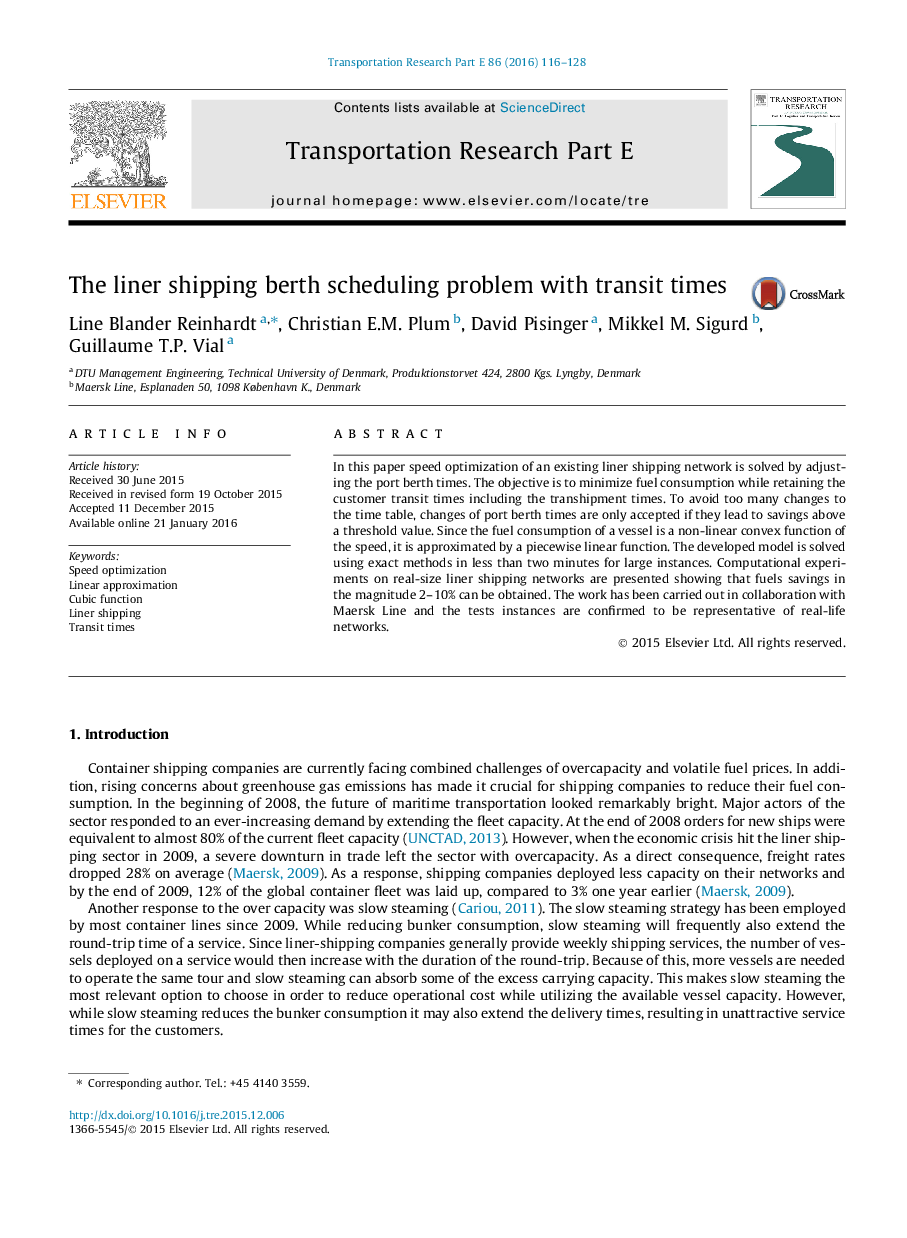| Article ID | Journal | Published Year | Pages | File Type |
|---|---|---|---|---|
| 1023012 | Transportation Research Part E: Logistics and Transportation Review | 2016 | 13 Pages |
•New, original model for speed optimization of liner vessels by shifting berth times.•Comprehensive review of optimization literature considering bunker consumption.•Mixed-integer programming formulation is solvable in a few minutes.•Computational results on realistic data instances are reported.•Up to 8 percent fuel saving is possible without increasing the transportation times.
In this paper speed optimization of an existing liner shipping network is solved by adjusting the port berth times. The objective is to minimize fuel consumption while retaining the customer transit times including the transhipment times. To avoid too many changes to the time table, changes of port berth times are only accepted if they lead to savings above a threshold value. Since the fuel consumption of a vessel is a non-linear convex function of the speed, it is approximated by a piecewise linear function. The developed model is solved using exact methods in less than two minutes for large instances. Computational experiments on real-size liner shipping networks are presented showing that fuels savings in the magnitude 2–10% can be obtained. The work has been carried out in collaboration with Maersk Line and the tests instances are confirmed to be representative of real-life networks.
